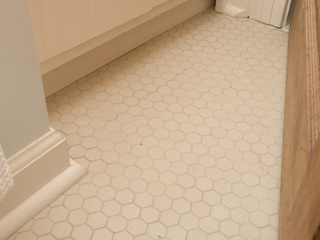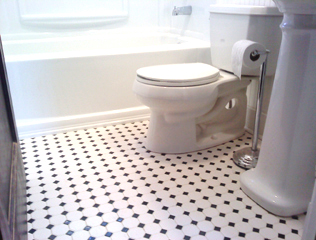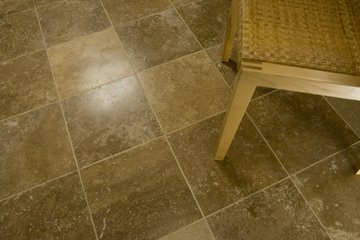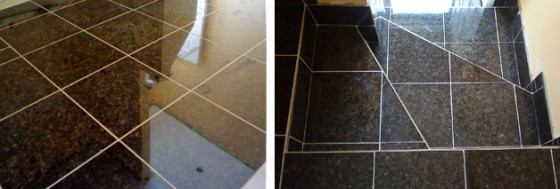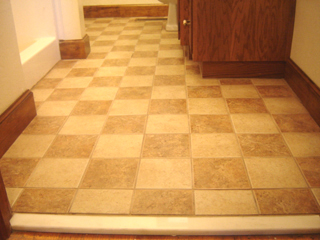Tile Floors
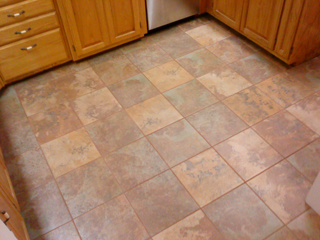 One of the most common uses for ceramic or stone tiles is for flooring. It’s an extremely durable surface that is much more resistant to wear and tear than other types of flooring. It’s also desirable because of the numerous sizes, colors and textures of tile that are available.
One of the most common uses for ceramic or stone tiles is for flooring. It’s an extremely durable surface that is much more resistant to wear and tear than other types of flooring. It’s also desirable because of the numerous sizes, colors and textures of tile that are available.
The tile and design that you choose can be completely unique to you, however there are some newer trends and classic uses of tile.
CLASSIC
In older homes, tile was mainly used in bathrooms. Toward the early 1900’s, using small white hex tiles like the ones I used in this bathroom (left) were common. These tiles can be unglazed, which adds a little more traction for slippery feet, but can mean more care to keep them clean.
Another classic look is to mix the small white and black tiles like this cottage bathroom(right). This is not an old bathroom, I recently renovated the entire room, aiming for a classic look from the tile to the beadboard. These days, the small tiles come on 12″ x 12″ sheets, making them easier to lay than trying to place each individual tile. (I’m so thankful for that!)
NATURAL STONE
If you want to add more character to the flooring, you might consider a natural stone. Stone tiles, such as slate, travertine, or marble often contain various shades and accent colors that will make your floor a work of art. This floor (left) uses a polished travertine tile. Some travertine can be rough and porous (often called tumbled), where this particular one had the voids filled and polished making it acceptable for a kitchen. The porous stones are often best used in places that aren’t as prone to spills because those pores are harder to keep clean.
The bathroom (below) that I added to a client’s home uses a black shade of marble. Marble is a beautiful stone and quite impervious to moisture. You can have your own Roman bath using this stuff! This particular bathroom had a few steps leading down to an exterior door. Yes, you can tile steps! It takes a little more planning, but steps can be tiled to match your floor and keep the floor heights consistant, even on winder steps like these are.
Natural stone, can require a little more prep work before installing because it needs a sturdier foundation below. Sometimes this means adding a couple extra supports in the crawlspace or sistering joists. Stone is not as forgiving to flexing floors so we try to remove as much deflection, or bounce, as possible.
CERAMIC & PORCELAIN TILE
Beyond the natural stones, there are a vast array of choices of ceramic tile to choose from. Many of these may mimic natural stone or have an artistic design. Beyond the types that are available, there are numerous sizes to choose from as well.
You can even mix a couple colors as I did for this checkboard bathroom floor (right). Mixing sizes and installing tile diagonally can also add interest to the design, but these things take longer and require some extra thought in the planning stage so that things lay out nicely.
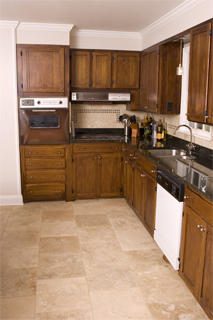 The payoff in having a tile floor is having a completely unique design and a floor that will last for decades with minimal care. If you’re considering it, give me a call and we can chat about your ideas and all the possibilities. (contact)
The payoff in having a tile floor is having a completely unique design and a floor that will last for decades with minimal care. If you’re considering it, give me a call and we can chat about your ideas and all the possibilities. (contact)

